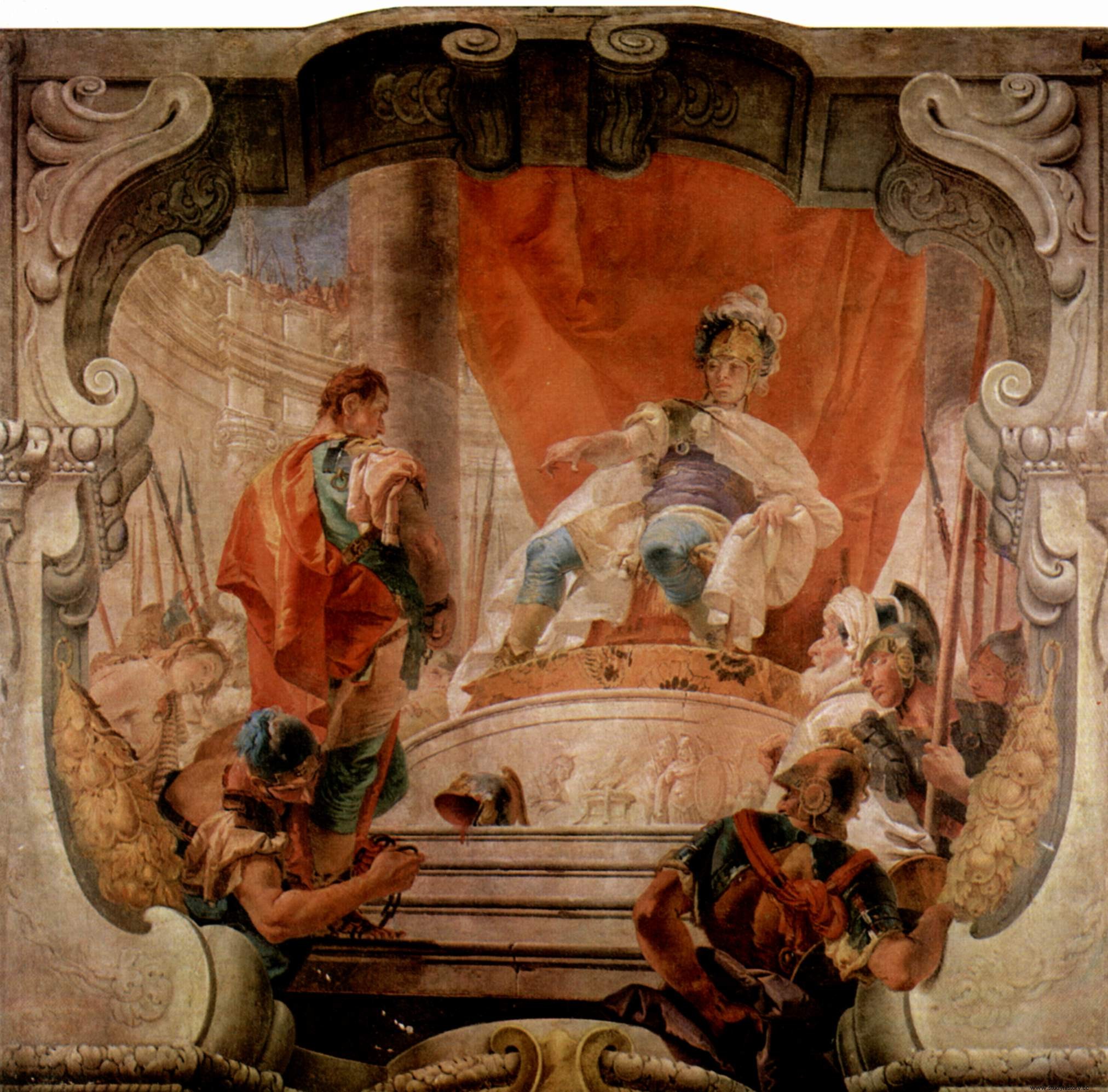Sorry, it's not the smile of the Mona Lisa . I'm talking about the gesture known as "the clemency of Scipio «.
Historians Polybius and Livio Titus were in charge of spreading this story after the conquest of Cartago Nova (Cartagena) by Scipio the African . It seems clear that with the intention of proclaiming the superiority of Latin culture and the mercy of the victors.
After the conquest of Cartago Nova, a group of Roman soldiers offered Scipio an Iberian princess as spoils of war. The girl, according to historians, was intoxicatingly beautiful. When they met face to face, the young woman thought that she would be a toy in the hands of the winner and only dared to say:» I am engaged to Lucio her (a Celtiberian leader) ». When her father found out about her, she raised a large ransom and went to Scipio to retrieve his daughter. Contrary to expectations, Scipio gave the young woman to her father and forced her to use the ransom as a dowry for her daughter's wedding. Later, and as a token of gratitude, Lucius and his soldiers joined Scipio's service as auxiliary troops.
This humanitarian gesture would be a reason for representation by different artistic disciplines:
Sculpture
- In the 15th century, precious stones, carvings and cameos were carved with this motif
Painting
- A panel by the Italian painter Pinturicchio of the s. XV
- A large painting by Giovanni Bellini from 1505
- Two canvases by the Flemish artist Anthony van Dyck, from the 17th century,
- Two other canvases by the French Nicolas Poussin and Lemoine from the 17th century
- A large painting by the Venetian Tiepolo, from the 18th century
- Federico de Madrazo, in the 19th century
Opera
- Only between 1664 and 1815 until 19 by Francesco Cavalli, Alessandro Scarlatti, Tomaso Albioni, Georg F. Handel, J. Christian Bach…
Literature
- Multiple works deal with and describe "the clemency of Scipio"

Clemency of Scipio

Clemency of Scipio 2
Photos:Wikipedia. Source:Panta Rei and Spain, a new History (José Enrique Ruiz-Domenec)
